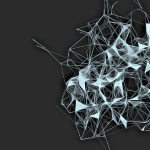Over the past several years, the rapid expansion of artificial intelligence (AI) has transformed numerous sectors, including healthcare and logistics. Another field in which AI is increasingly being utilized is drone technology. Drones, once solely for military and recreational use, are now being endowed with AI capabilities to perform a multitude of various tasks. These enhancements also come with significant issues, particularly in the realm of cybersecurity. Drone-based cyber threats are fast becoming an issue, and AI’s role in perpetuating and preventing such threats needs to be understood in light of emerging security issues.
Drone Cyber Threats
AI drones present a massive security risk since they can fly and interact with autonomous critical systems. Autonomous drones can be weaponized, used for spying, or as rogue agents to launch cyberattacks. There are several possible threats that arise from AI-driven drones:
Data Breaches and Espionage: Drones with AI can go into sensitive places and collect information.
The drones can be set to fly stealthily into government facilities, corporate offices, or military bases undetected. They have sensors, cameras, and other tools to spy and gather information. Drones are able to capture useful information, including passwords, confidential data, and other personal material. After capturing the information, drones are capable of sending the information to the malicious users or storing the information for future purposes.
Denial of Service (DoS) Attacks: Drones can be utilized to carry out distributed denial-of-service (DDoS) attacks on vital systems, e.g., data centers, communication networks, or power infrastructure. AI helps drones detect weaknesses in a network on their own, so they can efficiently target and disrupt services. With the help of AI, drones can change their approach based on the state of the network, so it becomes more difficult for the defenders to stop or mitigate the attack.
Malware Delivery: AI-driven drones can deliver malware to targeted locations. They can travel to isolated areas or evade standard security protocols to drop or upload malware into key systems. AI can also aid the drone in determining when and where to deliver the malware, which makes it more likely that a cyberattack will succeed.
Rogue Autonomous Drones: Another more sinister threat is drones operating outside their designated parameters. The AI-driven drones can be hacked or hijacked by nefarious actors and turn into rogue agents that can cause harm or infiltrate systems unnoticed. The drones can be used to attack physical infrastructure or disrupt sensitive activities through the cyber route. Swarming Attacks: Drones, when operated via AI, have the capability to function in swarms, overwhelming a system or network with numbers and precision. Swarming drones can attack several systems simultaneously, creating a large-scale attack that is harder to defend against. AI allows these drones to communicate and coordinate with each other to optimize attack strategies and avoid countermeasures.
AI in Defense Against Drone-Based Cyber Threats
As AI drones can lead to a multitude of threats, it is very important to devise effective defense strategies to counter such attacks. AI is also an important part of defense because it improves detection, prediction, and ways of reducing damage. The ways in which AI can be utilized to defend against cyber threats from drones are given below:
Drone Detection Systems: Systems that use AI can find unauthorized drone activity.
It is possible to train machine learning models to recognize the unique features of drones, including their flight patterns, radar signatures, or visual features based on their shape and size. This makes it possible to detect potential threats early, even in locations where drones might try to conceal themselves. Having detected a drone, AI systems can monitor its trajectory, estimate its destination, and evaluate how great the threat might be.
Counter-Surveillance and Jamming: Perhaps the easiest way to defend against drones is by using counter-surveillance or jamming equipment. AI-powered equipment can scan whether a drone is surveilling and activate counter-measures, such as disabling the drone’s communications or GPS signal. By disrupting a drone’s ability to communicate or navigate, AI-powered jamming systems can neutralize a potential threat before it could cause any damage.
Autonomous Defense Drones: To fend off the danger posed by rogue or malicious drones, AI may also be used to deploy counter-drones. Such autonomous defense drones may track and intercept enemy drones, disabling them before they can inflict any damage. Using AI to predict the movement of an attacking drone, these counter-drones can accurately disable or capture the intruder.
Cybersecurity Integration: As drones become more connected to larger networks, protection from cyberattacks needs a strong integration with cybersecurity architectures. AI can help in keeping an eye on the health of the network and being capable of quickly recognizing problems that may be part of a cyberattack from drones. AI algorithms can adapt from past attack attempts and adjust their defense, which makes it harder for attackers to achieve success with new tactics.
AI-Based Risk Assessment: AI can assess risks in real-time by processing a vast amount of data and predicting where drone threats are likely to take place. Machine learning algorithms can study patterns in drone activity, weather, and security weaknesses to establish the likelihood of an attack. This type of analysis allows organizations to protect their resources prior to the emergence of problems.
Swarm Defense: In the event of a swarm of drones, AI can aid in the planning of defense strategies. AI can learn the behavior of the swarm and devise ways to neutralize it. This could include using AI systems to eliminate individual drones in the swarm or to interfere with their communication, making them less effective.
अयं निजः परो वेति गणना लघुचेतसाम्।
K
उदारचरितानां तु वसुधैव कुटुम्बकम्॥
“यथा राजा तथा प्रजा!!” – K
शरीरवाग्मनोभिर्यत्कर्म प्रारभते नरः।
K
न्याय्यं वा विपरीतं वा पापं वा या शुभं वा॥


